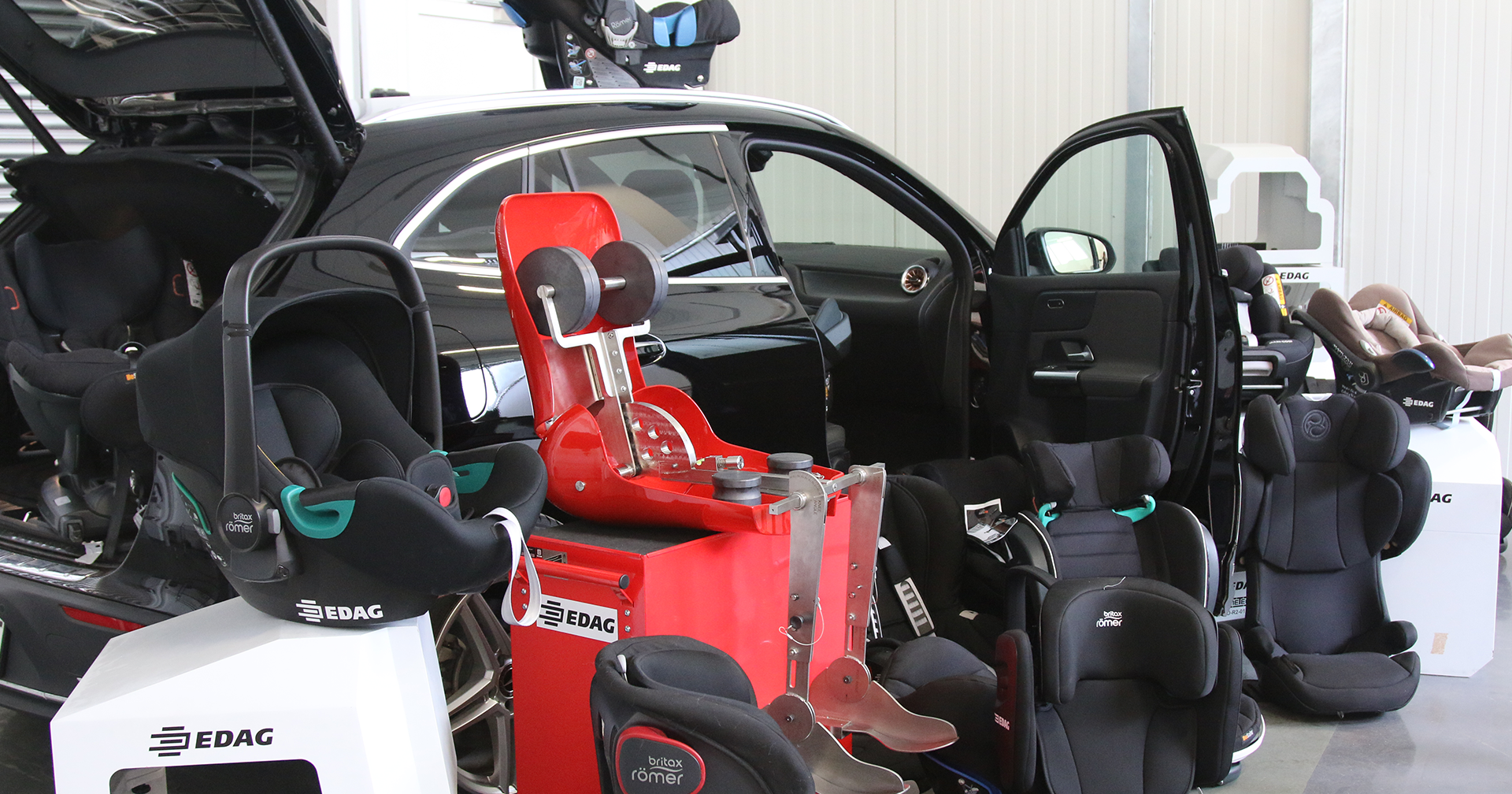Industry 4.0 has taken digitalization and networking in manufacturing to a new level. The digital twin makes it possible to aggregate information about machines, systems and production processes across all stages of the life cycle. The next logical step is the integration of data from all areas in order to link the real and digital worlds - to create an industrial metaverse. This makes it easier to visualize the complex real world in the digital model. At the same time, it makes it possible to control live processes, act with foresight using simulations and projections based on live data and test optimizations virtually in advance.
The virtual world "Second Life" was launched around 20 years ago. Hyped by IT companies and media professionals, it attracted a lot of attention - but the number of users remained low. After a short time, it disappeared into insignificance again.
Some may feel reminded of this episode of the early Internet age when the metaverse is now experiencing similar hype. The headlines today sound much the same as they did back then: e-commerce and virtual events, virtual workplaces and new opportunities for interaction in a digital space are set to open the door to innovative business models. Added to this are other consumer topics such as gaming and social media. No wonder: the trend is being led by Facebook parent company Meta and other tech giants from Silicon Valley.
Industry at the forefront
But that is only half the truth. The underlying technologies can be used universally - even in the industrial sector. An "industrial metaverse" has now also emerged, which offers some interesting possibilities. Bitkom CEO Bernhard Rohleder believes that development in this area is definitely more advanced than in the private consumer sector. He is convinced: "In five years at the latest, the industrial metaverse will have to play a role for almost all companies in the manufacturing industry if they want to remain competitive."
To understand this, we first need to address the question: What is the Industrial Metaverse anyway? A brief explanation from the IT industry association Bitkom reads: "[The industrial metaverse] enables (real-time) interaction with physical objects, processes and environments in a virtual environment or the overlaying of the real environment with virtual content in an industrial context." In other words, the industrial metaverse makes it possible to transfer complex structures and processes into a virtual model so that they are easier to understand.
The central elements are
- the connection to automation technology (OT),
- the use of digital twins and other basic Industry 4.0 technologies,
- a consistent and comprehensive data platform that enables live control and display as well as simulations based on real-time data and, last but not least, the use of immersive technologies, i.e. immersion in virtual worlds using virtual or augmented reality (VR/AR).
The Industrial Metaverse is therefore a - perhaps partially simplified - image of physical reality and its processes, and it enables interaction with industrial processes and systems. Be it on an (industrial) PC via keyboard and screen, via touchscreen on tablets or smartphones, or with VR glasses such as the Apple Vision Pro or the Quest from Meta.
Areas of application of the Industrial Metaverse
This is already resulting in a whole range of possible use cases, including
- Virtual 3D models: The Industrial Metaverse enables companies not only to create virtual 3D models of industrial plants and processes or visualize existing data sets, but also to display them with real-time data and link them to other data. This allows additional influences and dependencies to be taken into account and displayed.
- Supply chain management: The Industrial Metaverse can be used to manage the supply chain. Companies can track and optimize the movement of products and raw materials in real time to create a more efficient and transparent supply chain.
- Remote maintenance and monitoring: The Industrial Metaverse enables machines and systems to be monitored and maintained remotely, e.g. via VR or AR applications. By using these technologies, technicians can quickly identify and rectify problems without having to be on site, for example by instructing employees on site remotely.
- Virtual product development and simulation: Companies can use the Industrial Metaverse to create virtual prototypes, carry out tests and optimize designs even before they manufacture their first physical products.
- Training and education: The Industrial Metaverse can be used for training and education. Companies can create virtual training courses and training programs that help employees learn new skills and improve existing ones - safely. Here too, the ability to run simulations using actual and real-time data brings a new level of quality.
- Maintenance and repair: The Industrial Metaverse can be used for the maintenance and repair of machines and systems. Technicians can receive virtual training and practice in a safe virtual environment before actually carrying out repairs on the machines.
- Facilitate collaboration and communication with customers and suppliers: The Industrial Metaverse can serve as a platform for collaboration and communication between industrial companies and their customers and suppliers. A consistent database makes it possible to create a digital mock-up (DMU) that all participants can view from their respective standpoints: Planners, designers, programmers, plant managers, etc.
Many more items may be added to this list in the future - as digitalization in the industry and technical developments relating to the Metaverse progress.
The challenge of data consolidation - once again
The basis for all use cases is the provision of the relevant data. This comes from very different areas. These include ERP data as well as 3D models, sensor and machine data, process and control data as well as data on production, maintenance, from the IoT (Internet of Things) and from performance analysis - including live data.
As in previous development steps, such as the modularization of industrial plants or the administration shell, which is intended to collect and provide information across all stages of the life cycle, the concept stands and falls with the consolidation of the available data. While on the one hand there is increasing pressure on users to set a strategic course in favor of a common basis across different departments and applications, this pressure is also being felt by software providers. They are the ones who have to enable the undisturbed flow of data - for example by means of interfaces or support for open data formats.
One example is the USD (Universal Scene Description) data format, which enables the editing and processing of 3D scenes across different platforms, as used in simulations and VR/AR environments.
Which application would you like?
Closely linked to the use cases is the question of which technical platform should be used to implement an industrial metaverse. This is because there are various options for linking existing and new solutions, each with a different focus, on the way to the virtual multiverse. The most important providers currently include Nvidia (Omniverse), Siemens (Xcelerator), Dassault Systèmes (3D Experience), Unity (various solutions, including the 3D engine Unreal) and Autodesk with its 3D portfolio for industrial applications.
EDAG's experts have extensive knowledge of available applications, their strengths and weaknesses and their range of functions. They can provide companies with expert advice on how to adapt their application portfolio so that it meets both operational requirements and the challenges arising from the use of the industrial metaverse. Stumbling blocks quickly arise here, some of which are of a technical nature, while others are due to the processes and concepts of digitalization. These include, for example
- Lack of standardization.
- Complex data integration;
- Data protection and security;
- Technical complexity;
- High-performance connection;
- Acceptance and knowledge transfer;
Not forgetting the costs of implementation and ongoing development and the question of profitability, i.e. whether the investment is also economically worthwhile.
New paths to a higher OEE
Ultimately, an industrial metaverse has the same benefits as any other optimization of production and manufacturing in industry. Increased Overall Equipment Effectiveness (OEE), cost savings through the avoidance or earlier detection of errors, higher customer satisfaction, better collaboration, higher flexibility, increased safety and more environmentally friendly work. From this perspective, the Industrial Metaverse is another tool for achieving these corporate goals - possibly faster and easier than with other methods. Company managers should therefore get to grips with the topic quickly in order to be able to decide on a sound knowledge base whether the Industrial Metaverse can give them a competitive edge.
It is particularly exciting to look at practical examples of how these effects can be achieved. The EDAG coffee talk "Industrial Metaverse" provides answers to this and many other questions. In the 40-minute talk, the following topics will be highlighted and discussed using practical examples and experiences:
- The foundation of the Industrial Metaverse;
- Industrial Metaverse Use-Cases;
- Digital twin versus industrial metaverse;
- Unimagined possibilities in the industrial metaverse;
- Collaborative working;
- How to get started? Strategy. Technologies. Partners.
Further details can be found in the white paper "Industrial Metaverse - The revolution in manufacturing" from EDAG subsidiary Feynsinn, which can be downloaded here. You can also talk to our metaverse expert Dr.-Ing. Frank Breitenbach, Senior Expert Planning Methodology at EDAG Production Solutions. Or download the free recording of the Industrial Metaverse event here. 





